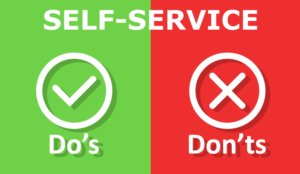Tony Lorentzen at Nuance looks at why digital self-service is so crucial for CX success and the importance of implementing the right virtual assistant to serve as your brand ambassador.
To maintain a competitive edge, brands have to differentiate on customer experience. And increasingly, that means providing intelligent digital self-service experiences that are always available to offer personalised service and rapid resolution.
It’s been widely noted that the COVID-19 pandemic has accelerated a shift toward digital self-service that was already beginning to pick up pace. Customers who may have shunned digital before the pandemic have been quick to recognise the value that chatbots and virtual assistants (VAs) offer them.
In a recent survey by OnePoll, 58% of consumers said they’ll continue to have more digital interactions than they did before the pandemic, after being impressed by the fast, convenient issue resolution they experienced in digital channels.
And it’s not just customers who are discovering the benefits of the digital shift. There are the obvious cost savings that come from greater self-service containment and reduced contact volumes for live agents. But brands with high-performing digital self-service programs have also seen remarkable gains in agent productivity, efficiency, and effectiveness.
In this first article of a three-part series, I’ll look at why an intelligent VA is a critical component for digital self-service success.
You Only Get One Chance to Make a First Impression
When customers knock on your digital front door looking for guidance, you need to impress them right away, or they might walk straight back out and wind up calling your contact centre, or worse—going to a competitor.
If you have an intelligent, engaging VA on hand, ready to greet customers as they engage with your brand, there’s a much better chance you’ll keep them on self-service channels. And there’s a much better chance you’ll keep them, period.
The best VAs use a combination of advanced conversational AI technologies, including natural language understanding and deep neural networks, to offer personalised engagements that feel like you’re having a conversation with a human. A very knowledgeable, helpful, and efficient human.
Truly intelligent VAs can also analyse emotion and sentiment to offer a more empathetic experience. Add biometric authentication into the mix, and these VAs can even recognise individual customers to provide personalised greetings, suggestions, and proactive support based on previous interactions or individual account details.
Intelligent VAs are also not a siloed solution. The best performing VAs in the market today are ones built with the customer journey in mind, seamlessly allowing a customer to shift from the voice channel to a digital channel, where the VA effortlessly picks up the conversations.
They are also tightly integrated into web page design where AI determines when to invoke a VA, providing consumers help when they most need it.
Even more importantly, the most advanced VAs understand when to hand over a customer to a live agent for support.
They make the escalation process completely seamless by routing to an agent with the right skillset and then giving that agent the full context of the conversation, along with other relevant customer insights. This eliminates the need for the customer to repeat their story and enables the live agent to quickly understand the situation and focus in on a resolution.
The VA I’ve just described sounds great, doesn’t it? But, as many brands have found over the last few years, there’s a big difference between building a functional chatbot that can answer a handful of FAQs and building an intelligent, scalable VA that can engage customers in dynamic conversations.
The Hidden Challenges of Building a VA
When Forrester Consulting interviewed firms for its latest Total Economic Impact™ study, commissioned by Nuance, they revealed the scale of the challenges they’d encountered when building their own chatbots or implementing point solutions that underperformed.
“Interviewees Noted how Their Organisations Struggled With Implementing Their Digital Customer Engagement Solution. […] Without a Robust, Enterprise-grade Solution to Support and Scale Their Efforts, Interviewees Found it Challenging and Time-consuming to Build out Their Organisations’ Digital Engagement Strategy.
The Hidden Costs and Unforeseen Time Commitments in Designing and Maintaining a Virtual Assistant Meant That Delivering the High-quality, 24/7 Customer Service They Wanted was Difficult.” – Forrester
Digital Self-Service Delivers Measurable Business Value
However, organisations that can overcome those challenges see huge business value from their VAs. As Forrester found during its interviews for the study, when VAs are built on the right technology, with the right expertise, they can:
- Improve CX, increase NPS and CSAT scores, and provide greater insight into customer needs and trends
- Boost Agent Efficiency, reduce AHT, increase call deflection, and enable seamless, contextual transfers to live chat, eliminating the need for manual workarounds
- Increase Sales by proactively offering information and guidance that improve conversion rates and reduce cart abandonment
If you’ve only ever encountered basic chatbots, it can be hard to believe that virtual assistants can have such a significant business impact. But, as brands around the world are discovering, the benefits are very real.
Just ask the contact centre agents at the world’s second-largest retailer, who saw 85% of customer cases resolved by a VA from the first day of deployment, freeing them to focus on high-value interactions.
Ask the folks at BNP Paribas Personal Finance Spain, where agents now handle 46% fewer calls thanks to a VA, enabling the firm to strike the ideal balance of superior digital experiences and improved agent efficiency.
Or ask the 440,000 people who applied for a COVID-19 support grant from the UK Government on just the first day of operation for the VA—they’ll tell you about the value of fast, effective digital self-service.
Author: Guest Author
Published On: 4th Apr 2022
Read more about - Guest Blogs, Nuance





































